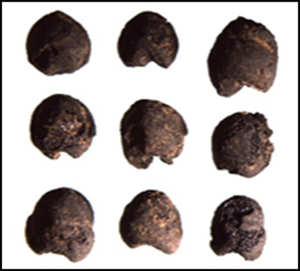Crossref Citations
This article has been cited by the following publications. This list is generated based on data provided by
Crossref.
Wei, Wenyu
Ma, Minmin
Chen, Guoke
Dong, Jiajia
Wu, Zekun
Li, Haiming
and
Li, Xiaobin
2023.
Human planting strategies and its relation to climate change during ∼4,800–3,900 BP in the mid-lower Hulu River Valley, northwest China.
Frontiers in Earth Science,
Vol. 11,
Issue. ,
Li, Haiming
James, Nathaniel
Chen, Junwei
Zhang, Shanjia
Du, Linyao
Yang, Yishi
Chen, Guoke
Ma, Minmin
and
Jia, Xin
2023.
Agricultural Economic Transformations and Their Impacting Factors around 4000 BP in the Hexi Corridor, Northwest China.
Land,
Vol. 12,
Issue. 2,
p.
425.
Yang, Jishuai
Yang, Xiaoyan
You, Ting
and
Chen, Fahu
2024.
The δ15N values of foxtail millet (Setaria italica) and common millet (Panicum miliaceum) are reliable indicators of manuring practices.
Science China Earth Sciences,
Vol. 67,
Issue. 9,
p.
2910.
Ritchey, Melissa M.
Tang, Li
Vaiglova, Petra
Lu, Hongliang
Sun, Yufeng
Frachetti, Michael D.
and
Liu, Xinyi
2024.
Into thin air: prehistoric intensive crop management in high altitude western Tibet.
Frontiers in Environmental Archaeology,
Vol. 3,
Issue. ,
Styring, Amy K.
Vaiglova, Petra
Bogaard, Amy
Church, Mike J.
Gröcke, Darren R.
Larsson, Mikael
Liu, Xinyi
Stroud, Elizabeth
Szpak, Paul
and
Wallace, Michael P.
2024.
Recommendations for stable isotope analysis of charred archaeological crop remains.
Frontiers in Environmental Archaeology,
Vol. 3,
Issue. ,
Liu, Xinyi
and
Jones, Martin
2024.
Needs for a conceptual bridge between biological domestication and early food globalization.
Proceedings of the National Academy of Sciences,
Vol. 121,
Issue. 16,
Dong, Guanghui
Liang, Huan
and
Zhang, Zhixiong
2024.
Human–environment interaction along the eastern Silk Road during the Neolithic and Bronze Age.
Palaeogeography, Palaeoclimatology, Palaeoecology,
Vol. 649,
Issue. ,
p.
112340.
Wu, Guiping
Zuo, Xinxin
Wu, Wei
Ren, Lin
Wu, Chunming
Lin, Yingjun
Xie, Hui
Pei, Yaoyao
and
Zhou, Guiyu
2024.
Late Neolithic to Bronze Age water management and upland rice cultivation in the mountainous areas of Southeastern China Coast.
Quaternary International,
Vol. 680,
Issue. ,
p.
55.
Sheng, Pengfei
Allen, Edward
and
Wang, Taizhi
2024.
Diversity of Late Yangshao Agricultural Practices at Xishanping, NW China.
Environmental Archaeology,
p.
1.
Zhuang, Yijie
2024.
Environmental Foundations to the Rise of Early Civilisations in China.
杨, 继帅
杨, 晓燕
游, 婷
and
陈, 发虎
2024.
粟和黍的氮稳定同位素比值是反映施粪肥行为的可靠指标.
SCIENTIA SINICA Terrae,
Vol. 54,
Issue. 9,
p.
2963.
Wu, Rubi
Belfield, Eric J.
Dong, Yu
Feng, Shangzong
Fu, Xiangdong
Harberd, Nicholas P.
Yang, Fan
Charles, Michael
and
Bogaard, Amy
2025.
Rice stable carbon and nitrogen isotope values as potential indicators of watering and manuring regimes.
Frontiers in Environmental Archaeology,
Vol. 3,
Issue. ,



